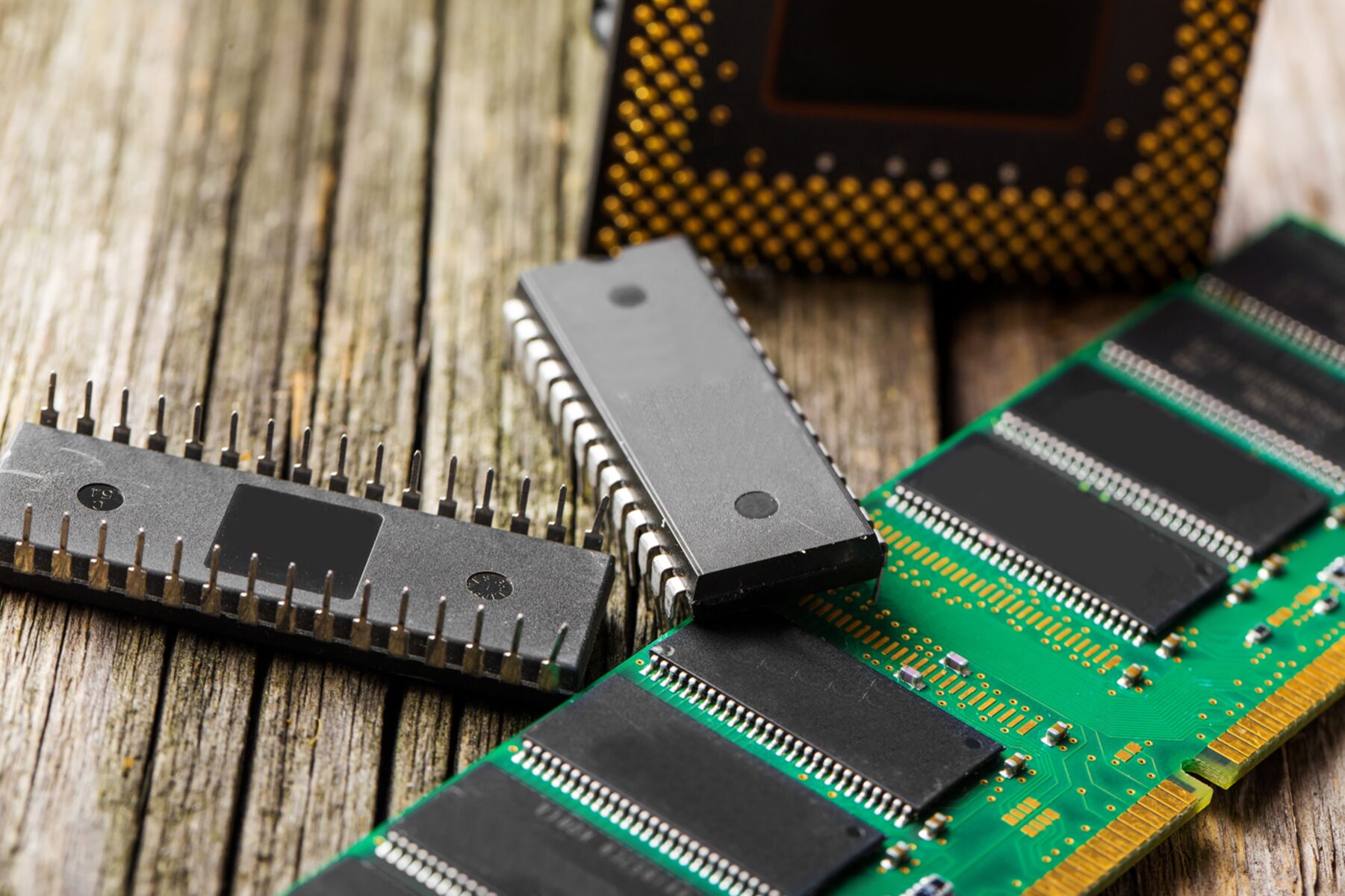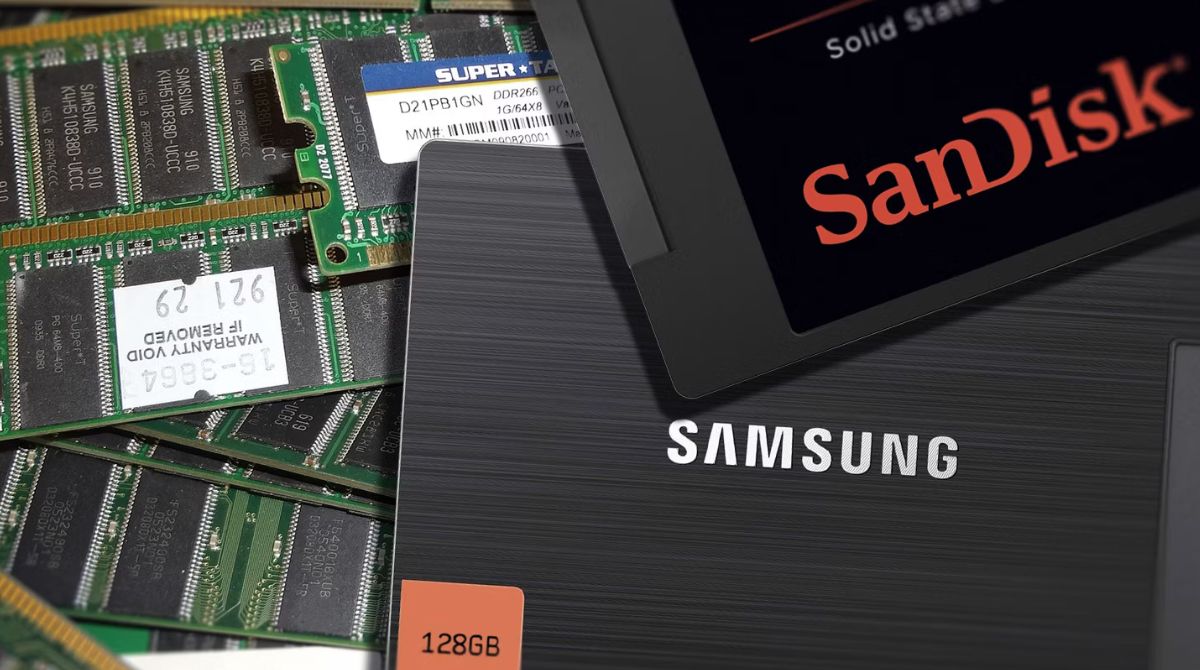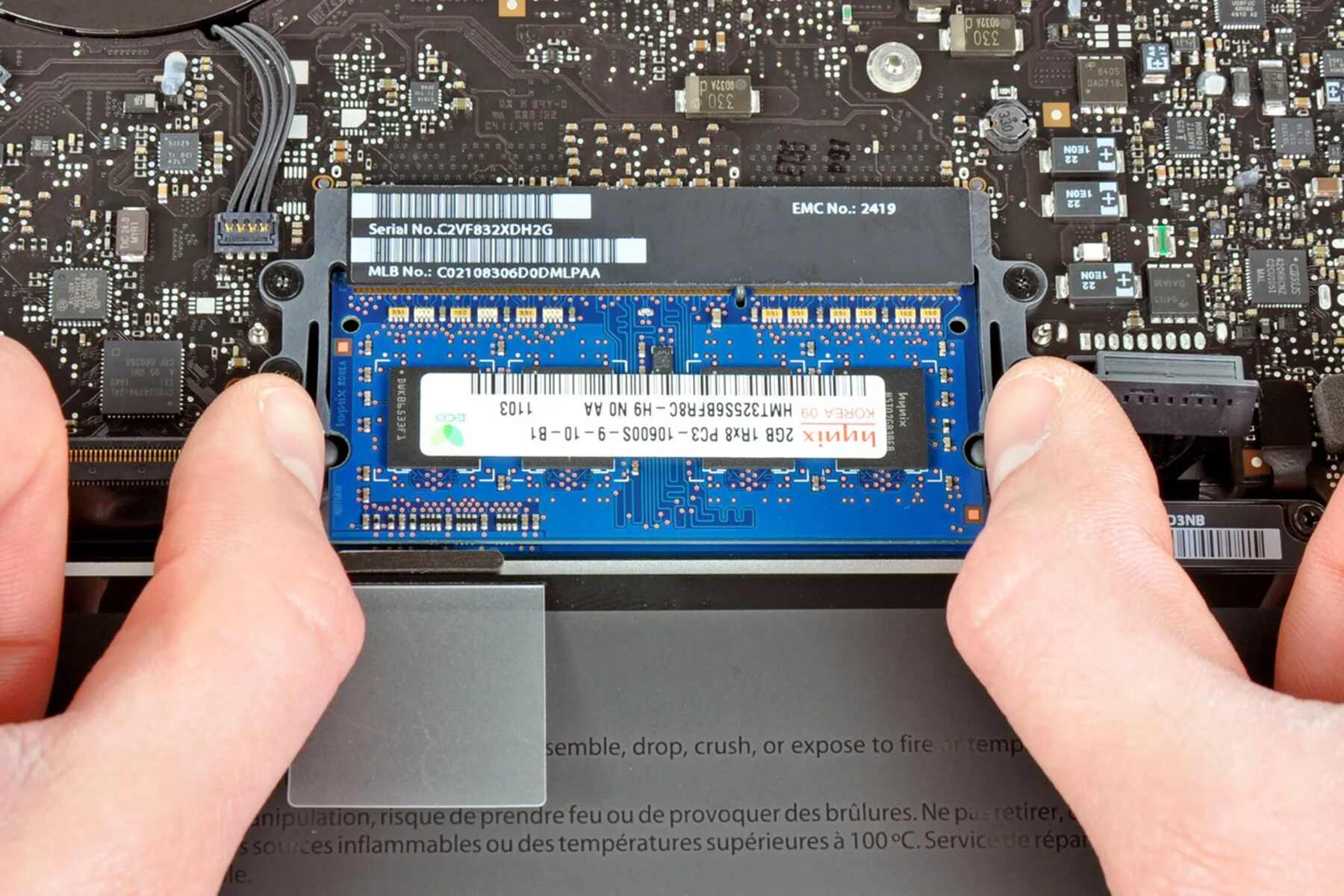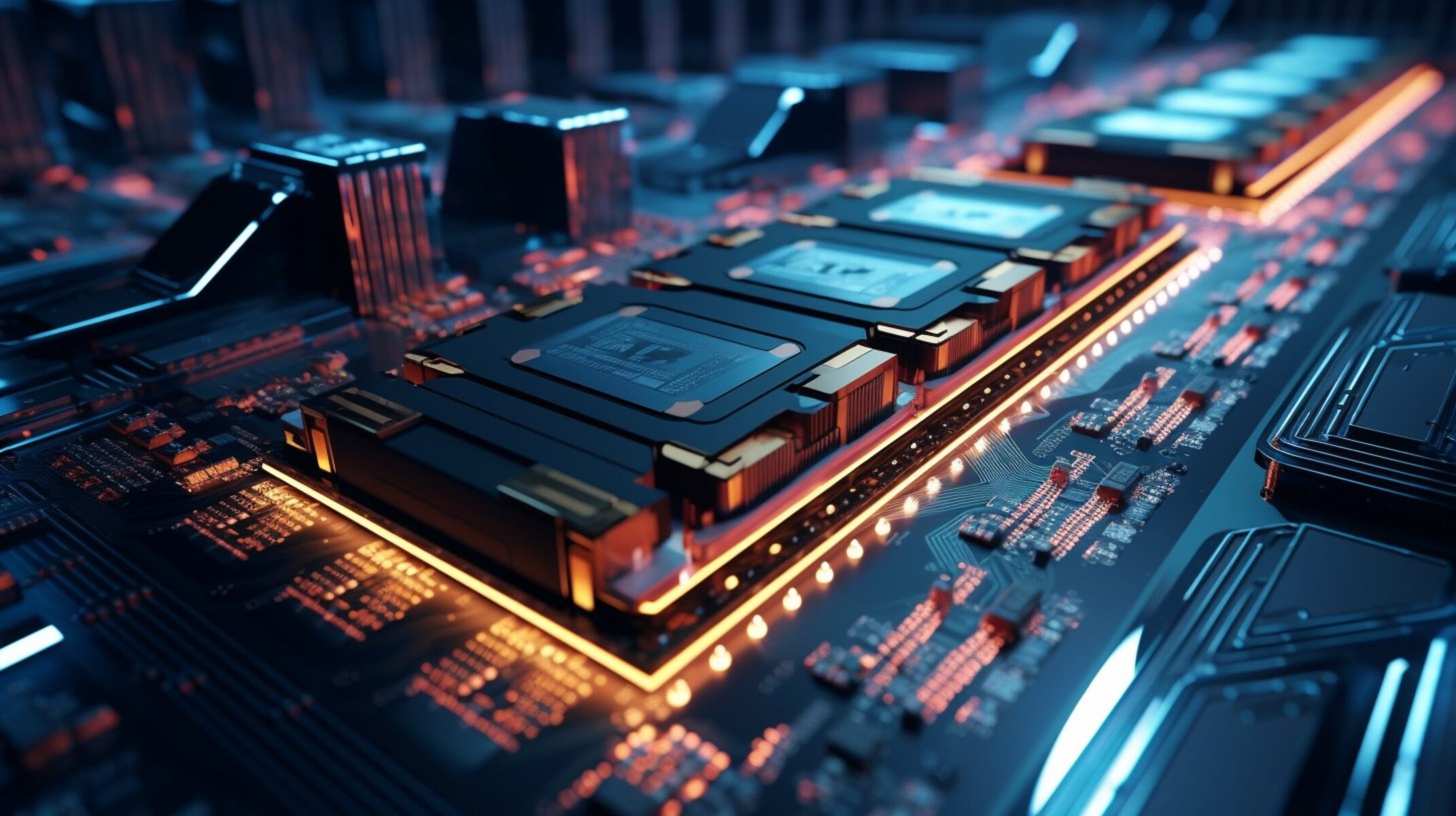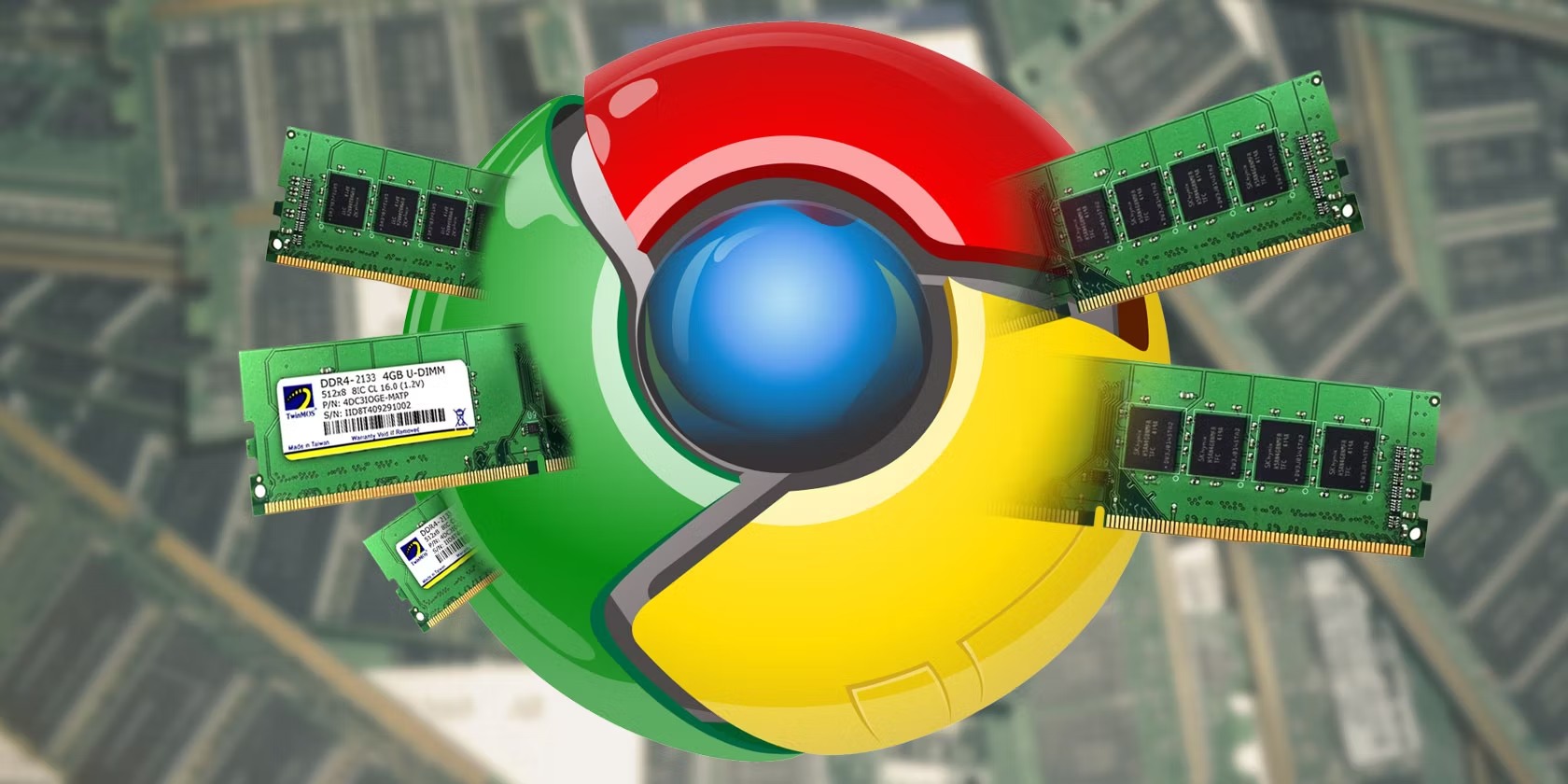Introduction
Welcome to the world of RAM, a vital component of computer systems that plays a crucial role in their performance and responsiveness. RAM, short for Random Access Memory, is a form of computer memory that stores data and instructions that are currently being used by the central processing unit (CPU). In simpler terms, it is the temporary workspace where your computer keeps the information it needs to access quickly.
Understanding RAM and its usage is important for both casual computer users and tech-savvy individuals. Have you ever wondered why your computer slows down when you have too many applications open? Or why a high-performance game stutters occasionally during intense gameplay? These issues can often be attributed to RAM limitations.
In this article, we will explore the concept of RAM and its significance in computer systems. We will delve into the factors that impact RAM usage and discuss what is considered a normal amount of RAM usage. Additionally, we will explore the RAM requirements of different types of applications and provide tips on how to optimize and manage RAM usage effectively.
Whether you are a casual computer user or a professional in the field, this article will provide valuable insights into the world of RAM and equip you with the knowledge to understand and manage RAM usage effectively.
What is RAM?
RAM, or Random Access Memory, is a crucial component of a computer system that provides temporary storage for data and instructions that the CPU needs to access quickly. Unlike long-term storage devices such as hard drives or solid-state drives (SSDs), RAM is volatile memory, meaning it loses all stored data when the computer is powered off.
RAM is a physical hardware component installed on the motherboard of a computer. It consists of multiple memory modules or chips, and the amount of RAM determines the overall performance and capability of the system. The more RAM a computer has, the more data it can store for quick access, resulting in smoother and more efficient operation.
When you open an application or perform a task on your computer, the relevant data and instructions are loaded from the hard drive or SSD into RAM. This allows the CPU to access the information more quickly than if it had to fetch it directly from the long-term storage device. The CPU can read from and write to RAM much faster than it can with other forms of storage, which greatly improves overall system performance.
RAM is organized into cells or storage units, with each cell capable of storing a fixed amount of data. These storage units are delineated into bytes, kilobytes (KB), megabytes (MB), gigabytes (GB), and, more recently, terabytes (TB). The size of these storage units determines the amount of data that can be stored in RAM at any given time.
One important characteristic of RAM is its speed, often referred to as memory clock speed. The speed of RAM determines how quickly it can transfer data to and from the CPU. Faster RAM modules can deliver data at a higher rate, resulting in improved system response times and multitasking capabilities.
In summary, RAM is a crucial component of a computer system that allows for quick and efficient access to data and instructions by the CPU. It provides temporary storage for information that is actively being used, improving overall system performance and responsiveness. The amount and speed of RAM directly impact the computer’s capability and ability to handle various tasks simultaneously.
Why is RAM important?
RAM plays a vital role in the overall performance and responsiveness of a computer system. It is a key factor in determining how effectively a computer can handle multiple tasks and run resource-intensive applications. Here are some reasons why RAM is important:
1. Speed and Performance: RAM enables the CPU to quickly access and retrieve data and instructions that are actively being used. Having an adequate amount of RAM allows for smoother multitasking, faster application launches, and seamless switching between different programs and tasks. Insufficient RAM can cause programs to run slowly, leading to frustrating delays and decreased productivity.
2. System Stability: RAM also contributes to the stability and reliability of a computer system. When RAM is maxed out, and the system runs out of memory, it can result in crashes, freezes, or the infamous “blue screen of death.” Sufficient RAM allows the system to handle the memory demands of various applications without overwhelming the resources and causing instability.
3. Gaming and Multimedia: Gamers and multimedia enthusiasts often require a significant amount of RAM to ensure smooth gameplay, fast loading times, and efficient rendering of high-resolution graphics, animations, and videos. Insufficient RAM can lead to laggy gameplay, frame rate drops, and overall poor performance in resource-intensive applications.
4. Virtualization and Multitasking: Virtualization, which involves running multiple operating systems or virtual machines simultaneously, can consume a considerable amount of RAM. Having ample RAM enables efficient virtualization and seamless multitasking, allowing users to run multiple applications, virtual machines, or complex software environments without significant performance degradation.
5. Future-Proofing and Upgradability: As software and applications become more demanding over time, having sufficient RAM ensures that your computer can meet these evolving requirements. Additionally, having spare RAM slots or the ability to upgrade the existing RAM modules provides flexibility and allows you to expand your system’s memory capacity in the future.
Overall, RAM is an integral component of a computer system that directly impacts performance, stability, multitasking capabilities, and the ability to handle resource-intensive tasks such as gaming and multimedia. Ensuring an adequate amount of RAM is essential to maintain a smooth and efficient computing experience.
Factors that affect RAM usage
RAM usage can vary depending on several factors, including the type of applications you use, the operating system, and the specific tasks being performed. Understanding these factors can help you optimize your RAM usage and ensure your computer operates efficiently. Here are some key factors that affect RAM usage:
1. Number and Type of Applications: The number and type of applications you have open concurrently can significantly impact RAM usage. Resource-intensive applications like video editing software, virtual machines, or heavy gaming can consume a large portion of your available RAM. Similarly, having multiple browser tabs open or running several programs simultaneously can also increase RAM usage. It’s important to monitor and manage your active applications to avoid excessive RAM consumption.
2. Memory Leaks and Background Processes: Some applications may have memory leaks, causing them to continuously consume more and more RAM over time. Background processes, such as system utilities, antivirus software, or auto-updaters, can also use a portion of your RAM. Regularly checking for memory leaks and optimizing background processes can help minimize excessive RAM usage.
3. Operating System Requirements: Different operating systems have varying RAM requirements. Newer versions of operating systems, especially those with more advanced features and visual effects, tend to require more RAM to operate smoothly. It’s important to check the recommended RAM specifications for your specific operating system and ensure your system meets or exceeds those requirements.
4. File Size and Content: Opening large files, such as high-resolution images or videos, can consume a significant amount of RAM. The size and complexity of the file being processed directly impact the RAM usage. Additionally, certain types of content, like 3D modeling or rendering, may require more RAM to generate or manipulate the data effectively.
5. Virtual Memory Usage: When your system runs out of physical RAM, it resorts to using virtual memory, which involves storing some data on the hard drive or SSD. While virtual memory helps alleviate RAM limitations, accessing data from the hard drive is much slower than accessing it from RAM. Excessive virtual memory usage can lead to a decline in overall system performance.
6. Installed RAM Capacity: The amount of RAM installed in your computer also affects how it uses memory. Insufficient RAM for the tasks at hand can result in heavy reliance on virtual memory, leading to decreased performance. Adding more RAM to your system can improve its capacity to handle resource-demanding applications and tasks.
By considering these factors, you can gain a better understanding of how RAM is utilized in your computer. Monitoring RAM usage and optimizing it based on your specific needs can result in improved performance, faster response times, and an overall smoother computing experience.
What is considered a normal amount of RAM usage?
Defining a “normal” amount of RAM usage can be challenging, as it can vary depending on the specific computer system, its configuration, and the tasks being performed. However, there are some general guidelines to consider when assessing RAM usage. It’s important to note that these are approximate values and can vary based on individual circumstances:
1. Idle System: When your computer is idle, meaning no intensive tasks are running, it should typically consume around 20-30% of the installed RAM. This range can vary based on the operating system and background processes running in the background.
2. Web Browsing and Light Applications: When browsing the internet or running lightweight applications, such as word processors or spreadsheet software, your RAM usage should generally stay within a range of 50-70% of the installed RAM. This range allows for smooth multitasking and efficient allocation of memory without putting excessive strain on the system.
3. Resource-Intensive Applications: Resource-demanding applications, such as video editing software, virtual machines, or gaming, can significantly increase RAM usage. It is not uncommon for RAM usage to go beyond 70% and approach 90% or more in these scenarios. This level of usage is considered normal as long as the system maintains stability and performance is not adversely affected.
4. RAM Intensive Tasks: Running multiple resource-intensive tasks simultaneously, like editing large videos while running virtual machines and rendering 3D models, can push RAM usage to its limits. In such cases, it is common for RAM usage to go beyond the installed capacity, resulting in the use of virtual memory. While this is normal, it can lead to decreased performance due to the slower data access speed associated with virtual memory usage.
5. Monitoring Tools: To gauge the RAM usage of your system accurately, you can rely on various monitoring tools. Task Manager (Windows), Activity Monitor (macOS), or third-party software like CPU-Z can provide real-time information on RAM usage. Monitoring tools can help you identify any excessive or abnormal RAM usage that might be affecting system performance.
While these guidelines can give you a general idea of what is considered normal RAM usage, it is crucial to remember that RAM requirements can vary based on individual computing needs and the specific tasks being performed. Ultimately, a normal amount of RAM usage is one that allows your system to operate smoothly, without crashes, freezes, or significant performance degradation.
Different types of applications and their RAM requirements
Applications have varying RAM requirements based on their complexity, features, and resource demands. Understanding the RAM requirements of different types of applications can help you allocate the appropriate amount of memory and ensure optimal performance. Here are some common types of applications and their RAM requirements:
1. Web Browsers and Office Applications: Web browsers and office applications, such as word processors and spreadsheets, are generally lightweight and do not require a significant amount of RAM. These applications typically run smoothly with 2-4 GB of RAM. However, if you frequently open multiple tabs or work on large documents, allocating 4-8 GB of RAM can ensure efficient multitasking and prevent sluggish performance.
2. Multimedia and Graphic Design Software: Multimedia editing and graphic design software, such as Adobe Photoshop or Premiere Pro, can be resource-intensive. These applications often require a minimum of 8 GB of RAM to run smoothly. For professional use or when working with large files, 16-32 GB of RAM is recommended for optimal performance and to accommodate the memory demands of complex editing and rendering tasks.
3. Video Games: Video games can have varying RAM requirements depending on their graphics, level of detail, and world size. AAA titles and graphically demanding games typically recommend at least 8 GB of RAM, while some games might suggest 16 GB or more for optimal performance. Multiplayer or online games may require additional RAM to handle the network connections and player interactions. It’s important to check the game’s system requirements and allocate sufficient RAM accordingly.
4. Virtual Machines and Emulators: Running virtual machines or emulators to simulate different operating systems or test software compatibility requires a significant amount of RAM. Each virtual machine requires its own dedicated RAM allocation. For basic virtualization, 8-16 GB of RAM is recommended, but if you plan to run several virtual machines simultaneously or work with resource-intensive environments, 32 GB or more might be necessary.
5. CAD and 3D Modeling Software: Computer-aided design (CAD) and 3D modeling software, such as AutoCAD or SolidWorks, demand substantial amounts of RAM. These applications rely on RAM for rendering complex 3D models and handling large data sets. It is recommended to have at least 16 GB of RAM when working with CAD or 3D modeling software, but for more complex projects, 32 GB or more might be necessary to ensure smooth performance.
6. Database Management Systems and Servers: Database management systems and servers, such as MySQL or Apache, can benefit from higher RAM allocations. The amount of RAM required depends on the size and complexity of the database and the number of concurrent connections. In general, servers and database systems may require 16 GB or more of RAM to handle the processing and storage needs efficiently.
Keep in mind that these are general guidelines, and specific RAM requirements can vary among applications of the same type. It’s always recommended to check the system requirements provided by the application developers and allocate sufficient RAM based on your specific needs to ensure optimal performance and avoid system slowdowns.
How to monitor and manage RAM usage
Monitoring and managing RAM usage is crucial to ensure your system operates efficiently and to identify any potential performance issues. By following these tips and utilizing monitoring tools, you can effectively monitor and manage your RAM usage:
1. Use Task Manager or Activity Monitor: Task Manager (on Windows) and Activity Monitor (on macOS) are built-in system tools that provide real-time insights into the performance of your computer, including RAM usage. They allow you to monitor which applications are utilizing the most RAM and identify any potential memory leaks or excessive resource consumption.
2. Identify Resource-Intensive Applications: Keep an eye on applications that consistently consume a significant amount of RAM. If you notice an application using an excessive amount of memory, check for available updates or alternative applications that might be more memory-efficient.
3. Close Unnecessary Applications and Processes: Close any unnecessary applications, background processes, or startup programs that consume RAM. Many applications and processes run automatically in the background and may not be required for your current tasks. Ending unnecessary processes frees up RAM and can improve overall system performance.
4. Optimize Web Browser Usage: Web browsers can quickly consume RAM, especially with multiple tabs open. Limit the number of tabs open simultaneously, disable unnecessary extensions, and consider using a lightweight browser if RAM usage is a concern. Clearing browser cache and regularly restarting the browser can also help free up RAM.
5. Disable Automatic Startup Programs: Many applications set themselves to start automatically when you boot up your computer. This can significantly increase RAM usage during startup and reduce available resources. Disable automatic startup programs for applications that are unnecessary or not frequently used to conserve RAM.
6. Allocate Virtual Memory: Virtual memory is a feature that allows your computer to use a portion of the hard drive or SSD as additional memory when the available RAM is fully utilized. Ensure that your virtual memory settings are properly configured to prevent excessive usage and to keep the system running smoothly.
7. Upgrade RAM: If you consistently find your system running out of RAM for the tasks you perform, consider upgrading your RAM modules. Adding more RAM can provide your system with the necessary resources to handle resource-intensive tasks and improve overall performance.
8. Regularly Reboot Your Computer: Rebooting your computer clears the RAM and allows the system to start fresh. This can help reduce accumulated RAM usage and address potential memory leaks or inefficient resource allocation.
By monitoring RAM usage and implementing effective management strategies, you can ensure that your computer operates smoothly and efficiently. Remember to periodically check your RAM usage, optimize applications and processes, and consider upgrading your RAM if necessary to maintain optimal performance.
Steps to optimize RAM usage
Optimizing RAM usage can help improve the performance and responsiveness of your computer system. By following these steps, you can effectively manage and optimize your RAM usage:
1. Close Unused Applications: Close any unused applications or background processes that are consuming unnecessary RAM. By reducing the number of active applications, you free up valuable memory for tasks that require more resources.
2. Manage Startup Programs: Review and disable unnecessary startup programs. Many applications are set to automatically start when your computer boots up, consuming valuable RAM. Managing your startup programs ensures that only essential applications are launched, minimizing RAM usage.
3. Limit Browser Extensions and Tabs: Browser extensions and the number of open tabs can significantly impact RAM usage. Disable or remove unnecessary extensions, and be mindful of the number of tabs you keep open simultaneously. Consider using tab-saving or bookmarking features to reduce the RAM load.
4. Optimize Virtual Memory: Adjust your virtual memory settings to optimize RAM usage. Increasing the virtual memory allocation can help compensate for limited physical RAM, but keeping it too high can impact overall system performance. Find a balance that suits your specific needs.
5. Update Software and Drivers: Regularly update your operating system, applications, and device drivers. Updates often include bug fixes and performance enhancements that can optimize system resource allocation and RAM usage.
6. Use Lightweight or Web-Based Applications: Consider using lightweight alternatives or web-based applications for resource-intensive tasks. Lightweight applications typically have lower RAM requirements and can provide similar functionality without putting excessive strain on your system.
7. Manage Visual Effects and Animations: Adjusting visual effects and animations can help reduce RAM usage. Disable or reduce the intensity of graphical effects, such as window animations, visual transitions, and desktop wallpapers, to optimize system performance.
8. Upgrade Your RAM: If your computer consistently struggles with RAM-intensive tasks, consider upgrading your RAM modules. Adding more RAM can provide your system with extra memory capacity, allowing for smoother multitasking and better performance in resource-intensive applications.
9. Perform Regular System Maintenance: Regularly clean up temporary files, unused applications, and unnecessary system files using disk cleanup tools. Removing clutter and maintaining an organized file system can help optimize RAM usage and overall system performance.
10. Restart Your Computer: Restart your computer periodically to clear the RAM. Rebooting your system allows for a fresh start, freeing up memory and addressing any memory leaks or inefficient resource allocation.
By implementing these steps, you can optimize RAM usage and ensure that your computer system operates efficiently. Regularly reviewing and managing your applications, adjusting system settings, and performing maintenance tasks will help keep your system running smoothly and improve overall performance.
Conclusion
RAM, or Random Access Memory, is a vital component of a computer system that plays a crucial role in its performance and responsiveness. Understanding RAM and its usage is important for optimizing system performance and ensuring efficient multitasking capabilities.
In this article, we explored the concept of RAM and its significance in computer systems. We discussed how RAM serves as temporary storage for data and instructions that are actively being used by the CPU. We also delved into the factors that impact RAM usage, such as the type of applications being run, the operating system, and the specific tasks being performed.
We discussed what is considered a normal amount of RAM usage, recognizing that it can vary based on individual needs and specific tasks. We explored the RAM requirements for different types of applications, including web browsers, multimedia software, gaming, virtual machines, and database management systems.
We also provided tips on how to monitor and manage RAM usage effectively. By using system tools like Task Manager or Activity Monitor, closing unused applications and background processes, optimizing virtual memory, and upgrading RAM when necessary, users can ensure their systems are performing optimally and efficiently.
Optimizing RAM usage is crucial to maintaining system stability, improving multitasking capabilities, and enhancing overall performance. By following the steps outlined in this article, users can ensure that their computer systems are utilizing RAM efficiently and operating at their full potential.
In summary, RAM is a critical component in computer systems, enabling quick access to data and instructions for improved performance. By understanding the factors affecting RAM usage, monitoring it regularly, and implementing optimization techniques, users can maximize the potential of their systems and enjoy a smoother and more efficient computing experience.







